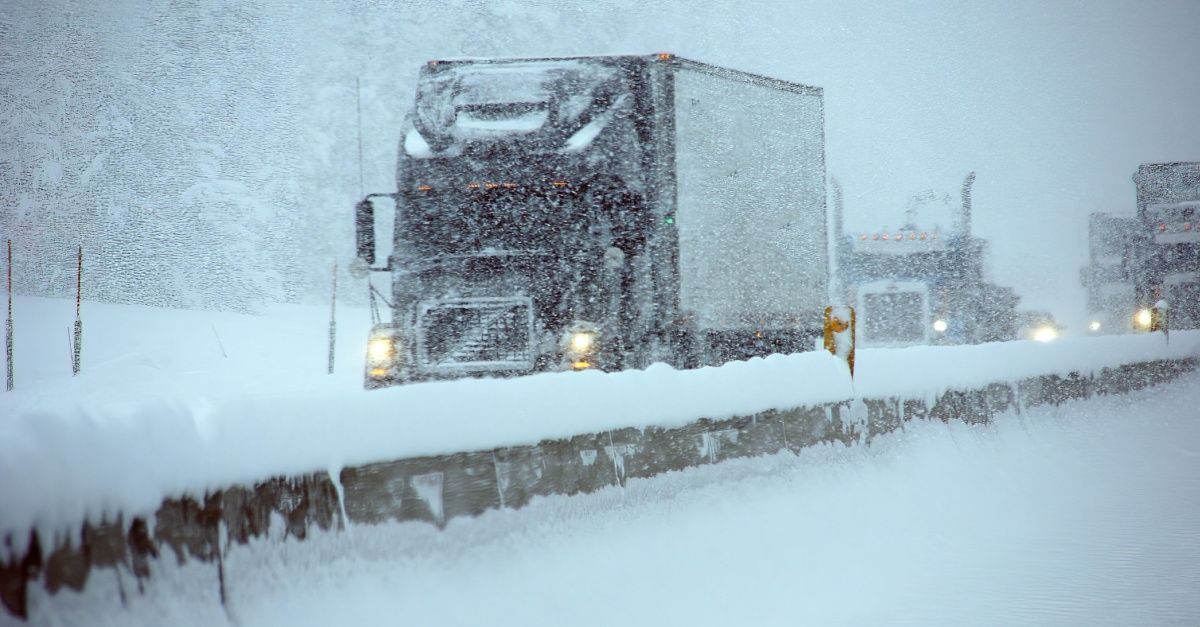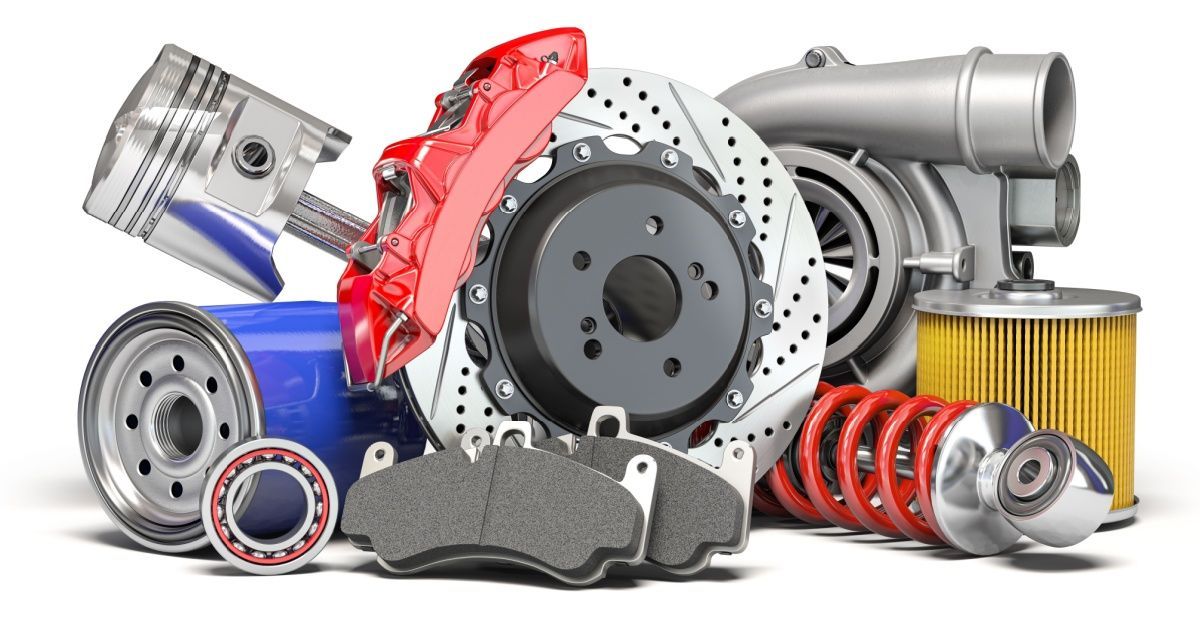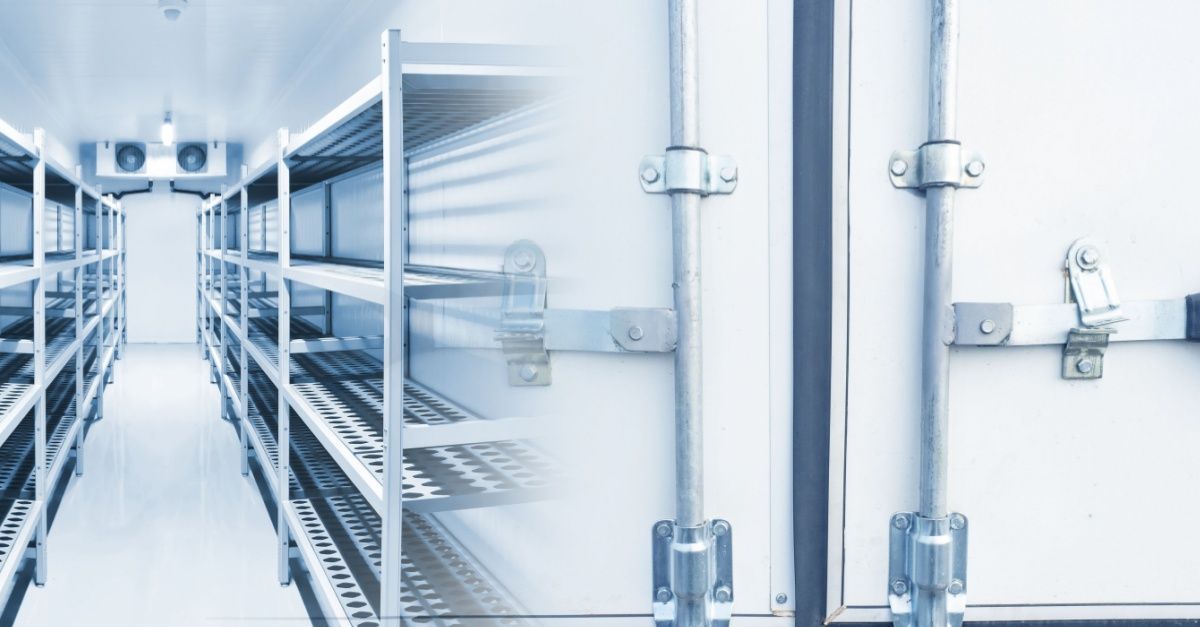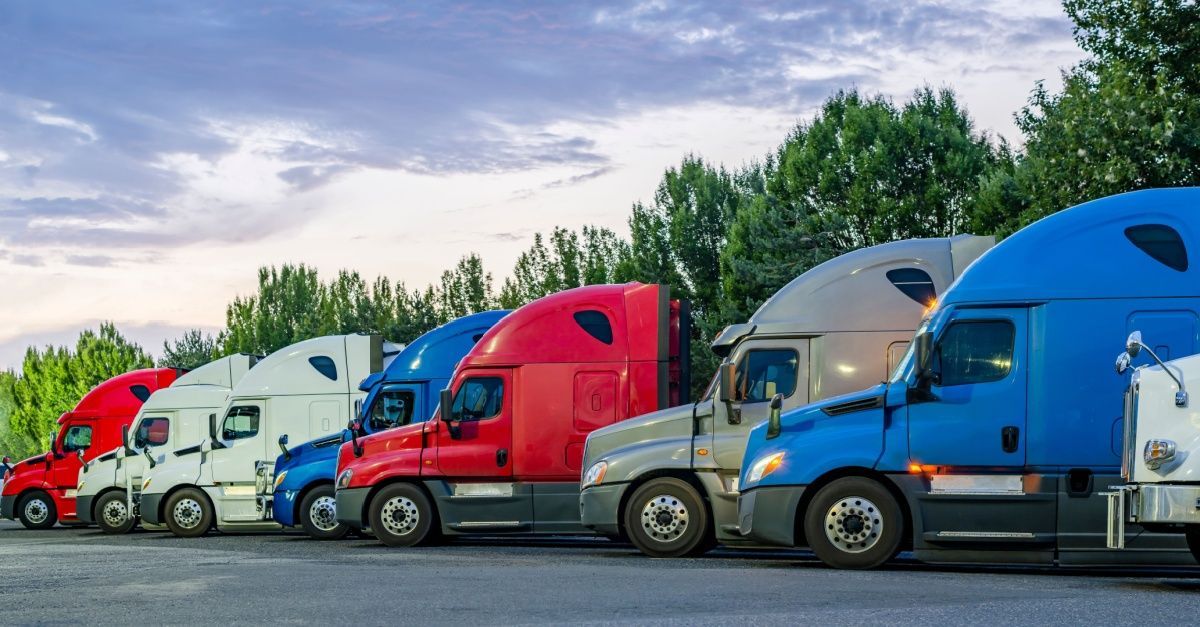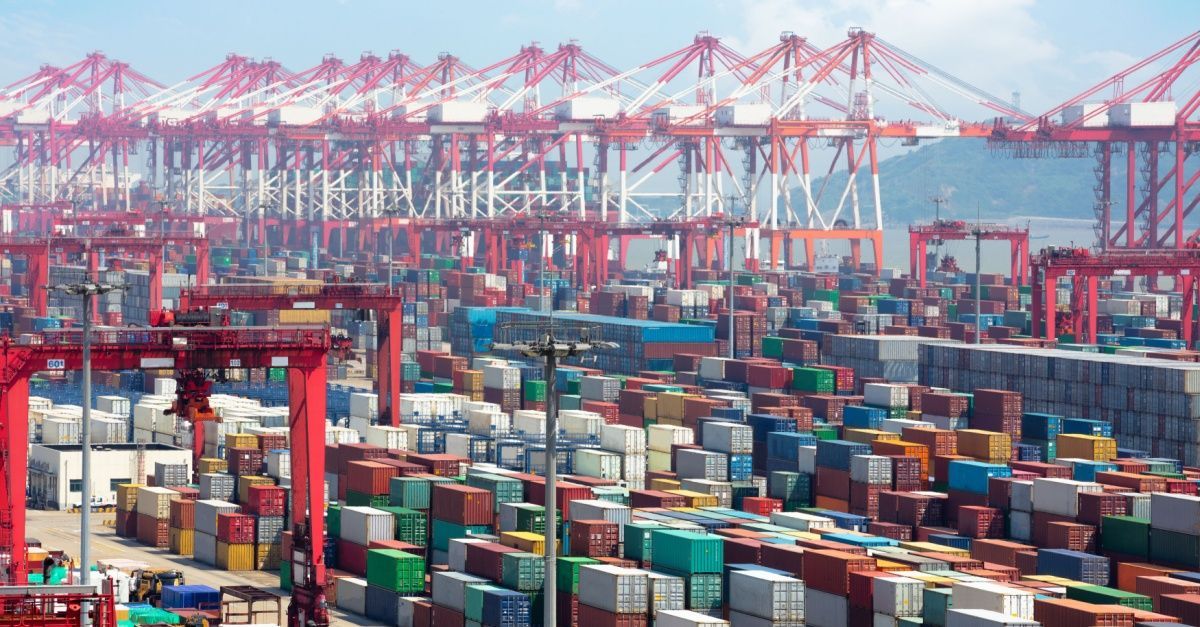A Shipper’s Guide for Food Logistics
Blog Post CTA
A Shipper’s Guide for Food Logistics
While all shipped products are important, food ranks high on the list of priorities because, simply, people have to eat. With many foods requiring temperature- and climate-controlled environments throughout the supply chain journey, shipping of this precious cargo comes with greater responsibility and increased logistical concerns to ensure on-time, in-full deliveries with no product degedation.
This comprehensive guide examines food logistics, the types of food supply chains, and current industry trends. It also covers what services are available for food shippers and how an expert partner in food and beverage logistics can help them succeed.
What is Food Logistics?
Food logistics is how food products get from Point A to Point B. Three main areas are involved in food logistics: transportation, storage, and distribution. Not only must the logistics concerns of all three be figured in, as is the case with all shipped items, but there is the added need to make sure all three can handle and are prepared for items that must be climate controlled and free of any cross-contamination. All areas must be prepared to handle these special circumstances, from the vehicles transporting the food to workers handling the shipments in climate-controlled storage warehouses. Breakdowns and improper handling put food at risk, increasing the possibility of food waste and spoilage. Not only will there be cost losses because of claims sought, but a spoiled product can negatively impact a company’s customer service and reputation.
Types of Food Supply Chains in Food Logistics
The food supply chain can be complex, with multiple stages that shippers must monitor closely.
Production: This is the farm part of the farm-to-the-table. It is the food source, either grown or developed with guidelines in mind. Laws are also in place to ensure quality, appearance, and food safety.- Handling and storage: This stage comes before transporting the product. Potatoes provide a perfect example of how each product has a particular process: Some potatoes must be washed before being packaged for transportation, but others need to go straight into bags to start their journey. The type of food and its end destination decide the approach to handling and storage.
- Processing and packaging: Again, food safety is a concern here. The products must meet all food safety requirements before heading to packaging. After receiving the OK, the product is wrapped up and ready to move on.
- Distribution: After the product has been through the other stages, shipping takes over. The product must now make its way to its destination, which is quite often to markets.
Now that we know the stages that make up the supply chain, let’s look at their types and characteristics.
Continuous flow: This is the most traditional supply chain type. It is ideal for food manufacturers who produce food products that don’t vary often. It offers stability within high-demand production. The manufacturing process, by design, generates a regular cadence of product and information flow and provides a continuous-replenishment system that ensures high service levels and low inventory levels at customers’ facilities. This type is suited for mature industries with slight variations in customer demand.- Fast chain: The flexibility of this type works well with products that are changed out frequently. Think of trendy products with short life cycles. Manufacturers working with products with a shorter life cycle will benefit from the fast chain. Companies that adopt this type focus on shortening the time from idea to market.
- Efficient: In competitive markets, the efficient model is the go-to of all the supply chains. It represents an end goal at the premium level of competition in the marketplace.
- Agile: The agile type of supply chain management is most effective when a business deals in specialty items. This type, which sometimes allows increased movement, is ideal for companies that make products under unique customer specifications. It is mainly used in industries characterized by unpredictable demand. Managers focus on designing processes capable of the smallest possible batches to ensure agility.
- Flexible: As the name implies, this supply chain type is best suited for industries characterized by high demand peaks followed by extended periods of low demand. There is a high adaptability with the capability to reconfigure processes to meet specific customer needs or solve customer problems. This model’s success depends on management ensuring ample flexibility with an emphasis on rapid response capability.
- Custom configured: This is a combination of the agile and continuous flow types. The processes before the product configuration are managed under the continuous-flow type, while later processes operate as an agile supply chain. It is ideal for products with multiple and potentially unlimited product configurations. There is a high correlation between asset cost and total cost. The configurations are usually accomplished during the assembly process, where different product parts get assembled according to a customer’s specifications.
Trends in Food Logistics
There have been many factors in recent years that have affected the food supply chain and food logistics. Factors like COVID, the Great Resignation, and even natural disasters have changed the evolution of food shipping. Many of those factors have created food logistics trends that we can look at here.
Disruptions, Shortages Provoke Food Fraud
The chaos that COVID heaped upon us included some concerning issues for the food and beverage industry. The one-thing-leading-to-another timeline of problems began with shortages of raw materials, products, and labor. That caused an increase in food fraud as people started using the disruption and shortages to make counterfeit or low-quality products. A lack of food inspectors compounds the problem. There has been an exodus due to multiple reasons — retirement, illness, or resignation — that gap is not being filled because there are not enough college-age people to take their places. The lack of inspections is heightening food fraud concerns. This trend is one that the industry must keep a close eye on to maintain a safe, quality product for consumers.
Changes in Eating Patterns Raise Focus on Temperature-Controlled
The severe decrease in eating out during the pandemic forced food and beverage businesses to scramble to satisfy changing customer behavior. At-home options and ready-to-eat meals gained significantly greater shares. Also, the consumers’ interest in healthy, minimally processed foods, which require temperature control, continues to be high, and interest in cold-chain food items is rising. These movements will continue to affect the food industry. For instance, more businesses are offering safe cold storage and transportation to capitalize on the movements.
Last-Mile Delivery, Nearshoring & Omnichannel Take Hold
Before COVID, a customary logistics plan sufficed for shipment deliveries. But disruptions in recent years have changed that by increasing the need for flexibility and options like fast delivery. Smaller distributors that handle “last-mile delivery” have appeared, and hybrid-routing procedures are available to meet the demand for more last-minute deliveries. Another practice created by supply chain disruptions is nearshoring or reshoring, which means sourcing supplies closer to the business and customers. Purchasing resources that are closer to home means more control over supply. Like in retail, e-commerce fulfillment in the food industry has risen significantly. The omnichannel approach integrates all the different shopping and shipping methods and is now an integral part of shopping for almost every consumer. To succeed in today’s marketplace, the food industry must step up its direct-to-consumer efforts.
Technology Becomes a Much More Significant Factor
One of the critical areas that food and beverage businesses should focus on is technology. By embracing the latest technology — like analytics, automation, and artificial intelligence — companies can overcome some of the significant challenges in the industry. Analytics can help make more informed decisions. Automation and AI can help overcome labor shortages by leveraging data to better plan routes and cut down on time and resources.
Transportation Services to Support Food Shippers
Many concerns come with moving food shipments, but the No. 1 priority is ensuring the products arrive unspoiled and fresh. So let’s look at what needs to happen to keep those products in the ideal state to prevent food waste and spoilage.
Temp-Controlled for the Entire Journey
Having the correct reefer truck or container while the product is on the move is essential. But there is more to it than just that. To keep the cold chain intact for the complete trip, it’s also imperative that the product remains temperature controlled during any idle or storage time. If refrigerated food is left out too long on a loading dock, temperatures can rise enough for bacteria to grow. Even if that food gets returned to a refrigerated environment, that won’t stop the process of bacteria growth.
Frozen Freight
With more people opting to dine at home rather than at restaurants, the demand for frozen freight options and refrigerated services remains high. A suitable mode of transportation — which can include air, rail, and local transportation providers — is critical to getting frozen goods delivered safely, no matter how far the distance. To make sure food stays unspoiled, here are some things to remember:
- Keep the equipment well maintained.
- Pre-cool the freight before loading.
- Make sure that goods requiring only refrigeration do not get freezer burned.
- Plan the load configuration so items can be taken off in an order that benefits keeping certain foods at the right temperature.
- Optimize the route to come up with faster transportation times.
Reefer Trucking
Reefer — which is short for refrigerated — trucks or trailers have a built-in cooling system to ensure the cargo stays at the right temperature throughout the journey. A refrigerated trailer can usually keep freight at temperatures ranging from chilled to frozen. This is critical for sensitive cargo shipments or when the outside temperatures could result in a ruined load.
Expedited Shipping
Even the best-laid plans of any shipper can sometimes go astray. That’s when expedited shipping can prove crucial. A fast and reliable expedited delivery service can help you meet tight deadlines by performing those short-distance rush deliveries that are quickly becoming more and more common.
Technology Considerations
Food logistics has undoubtedly been one of the many groups that have benefited from all of the incredible technological advances in recent years. One advancement that has emerged is real-time visibility and tracking, which gives companies and customers live updates on the location and status of their shipments. Technology has also led to improvements in temp logging, which uses an electronic device that stores temperature measurements and saves the data for analysis.
How a Food & Beverage Logistics Company Can Help Food Shippers
There are many ways a food and beverage company can make life easier for food shippers. With an extensive background and expertise in foodservice logistics, Entourage Freight Solutions can help you navigate the world of refrigerated freight. Using expert knowledge, keen attention to detail, and a network of more than 7,500 carriers, Entourage Freight Solutions provides customers with a host of services that can make their lives easier. Let’s take a look at some of those services:
FoodService: The Entourage Freight Solutions team is well-versed in the various regulations affecting the movement of finished food items, fresh produce, and alcohol. EFS can provide just-in-time coverage, multi-pick shipments, flexible shipping options, and reefer and bulk goods transport to ensure your supply chain runs efficiently.- Food manufacturing: Your team can leverage Entourage Freight Solutions’ manufacturing supply chain solutions built on vast networks of dry van and refrigerated carriers to accommodate virtually any need. Top-quality services offered by the food manufacturing team include:
- Kitting of products to ensure assembly to your unique specifications.
- Individual quick-freezing processes to ensure the product reaches customers at the right temperature without posing an added safety risk.
- Tracking and tracing all goods throughout the food manufacturing process alleviates concerns..
- Grower and shipper: Entourage Freight Solutions offers an assortment of ready-to-roll trucks and services to help grower-shippers get their products to retailers or manufacturers on time. This includes all forms of fresh produce and finished, pre-packed goods that require refrigerated transportation.
- Retail: With the emergence of e-commerce, the retail world has significantly evolved. Combine that rise with brick-and-mortar sales that remain strong and you see why having a dedicated partner for retail goods transport like Entourage Freight Solutions is a must to keep up with the busy retail world. Entourage Freight Solutions offers a comprehensive lineup of retail distribution and delivery services. Our experience in foodservice and perishables allows us to integrate your new products into our delivery areas seamlessly.
Entourage Freight Solutions Can Help Make Sure Your Journey is Not Spoiled
The logistics of shipping food products bring with it a whole different level of responsibility. From the journey’s start to finish, temperature control must be foremost in mind, making life much more complicated and stressful for food logistics managers. One way to relieve that stress is to work with a 3PL specializing in food logistics. Entourage Freight Solutions brings years of experience handling produce and transporting foodservice ingredients and finished products. With an expert staff and cloud-based automated technology, EFS can help make sure you have an unspoiled experience. To find out more, visit our website and request a quote today.

